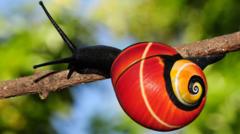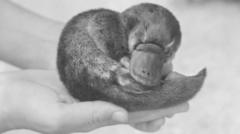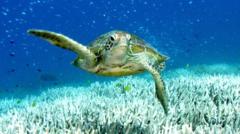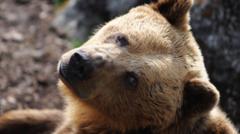The vibrant Polymita snails, known for their colorful and patterned shells, are on the brink of extinction as collectors target them for their beauty. An international collaboration between Cuban biologists and UK researchers aims to conserve these unique creatures through captive breeding and genetic research, amidst ongoing habitat threats.
Urgent Conservation Effort Launched to Protect Endangered Polymita Snails

Urgent Conservation Effort Launched to Protect Endangered Polymita Snails
A team of researchers is racing against time to save the strikingly beautiful Polymita snails of Eastern Cuba from extinction due to illegal shell trading.
Researchers are embarking on an urgent mission to save the Polymita tree snails, regarded as some of the most beautiful in the world, from dire threats to their survival. These endangered snails, native to the forests of Eastern Cuba, are known for their vibrant, intricately patterned shells; however, this very beauty is contributing to their decline. The illegal shell trade, driven by collectors’ desires, is pushing these species toward extinction, prompting conservationists to take action.
Collaborating with Cuban biologists, experts from the University of Nottingham in the UK are focusing on six known species of Polymita, with the most endangered being Polymita sulphurosa. This striking species displays a unique lime green shell adorned with blue flame patterns and bright orange and yellow bands. Prof Angus Davison, an evolutionary geneticist, expressed mixed feelings about their allure; while their beauty captivates researchers, it simultaneously threatens their population.
Online marketplaces reveal that collectors are willing to pay substantial amounts for Polymita shells, thereby exacerbating the potential for extinction. Conservationists warn that the unsustainable collection of these snails can swiftly lead to local extinction, especially as they face additional pressures like habitat loss due to climate change. Though there are international regulations, enforcement remains lax, allowing the trade of these shells to continue unimpeded outside Cuba.
In a bid to halt their decline, the collaborative project is designed to enhance understanding of Polymita snails through research and captive breeding. Prof Bernardo Reyes-Tur, a Cuban conservation biologist, faces significant challenges, including unreliable power sources, but he is determined to breed these snails in captivity. Meanwhile, Prof Davison's team is conducting genetic studies in well-equipped facilities in the UK, aiming to unlock the secrets of the snails’ unique coloration and understand their evolution.
Time is of the essence; researchers aspire to uncover the genetic makeup of these snails to guide conservation strategies. Notably, Eastern Cuba is the singular global habitat for Polymita snails, housing the expertise necessary for their preservation. With hope, the integration of genetic data into conservation efforts will facilitate the survival of these eye-catching creatures before they disappear into oblivion.



















